Despite the size of his business, Mark Lee has been following a fairly even and simple daily routine. There is no Hollywood blockbuster-style rush and panic in his workplace – a vintage building that previously housed the workshops of his manufacturing facility. Not at all the headquarters of an apparel business with a S$300million turnover. There is instead a group of elderly workers, mostly ladies, who are sorting out production overruns in one corner. They have worked in this manufacturing plant, and have either retired or slowed down, but Mark keeps them on the payroll for thrice- or twice-weekly ‘jobs’ that gives them something to do.
The space, Mark’s boyhood playground that he shared with his sibling, where he trimmed stray threads from garments, is nearly empty. The other wing of the facility has been sold off to another business, and is now separated from the Sing Lun side by a low fence. Manufacturing has been relocated to facilities in Vietnam and Cambodia.
If there is a buzz, it’s mostly upstairs where the admin and managements offices are laid out in neat sections, along with meeting rooms fitted with display racks, and impossibly immaculate records vaults. The second floor is accessible through a winding staircase lined with framed photos of big brand-name apparels that Sing Lun manufactures.
If anyone strays from that thought that this is where most sportswear and activewear worn across the globe originate, wall-to-wall posters of healthy, attractive people running and climbing and stretching in fashionable apparel will reel them back.
Mark goes to his office here in the morning (he has another one in town), sorts out his emails, pores over business matters with his team, and makes decisions as necessary. That frees up most of his afternoons, which he spends on meetings, mostly with government agencies.
Mark is active in trade associations. The managing director of Sing Lun, he is also president of the Textile and Fashion Federation, an active member of the Singapore Chinese Chamber of Commerce, and one of thirty members sitting on the Committee for The Future Economy, which helps the government develop the plan for Singapore’s future competitiveness. “My particular focus is on manufacturing and wholesale trade. In general, we’re looking at what the economy needs, for example, those of manufacturers who have perhaps offshored their operations, but still use Singapore as overseas headquarters.”
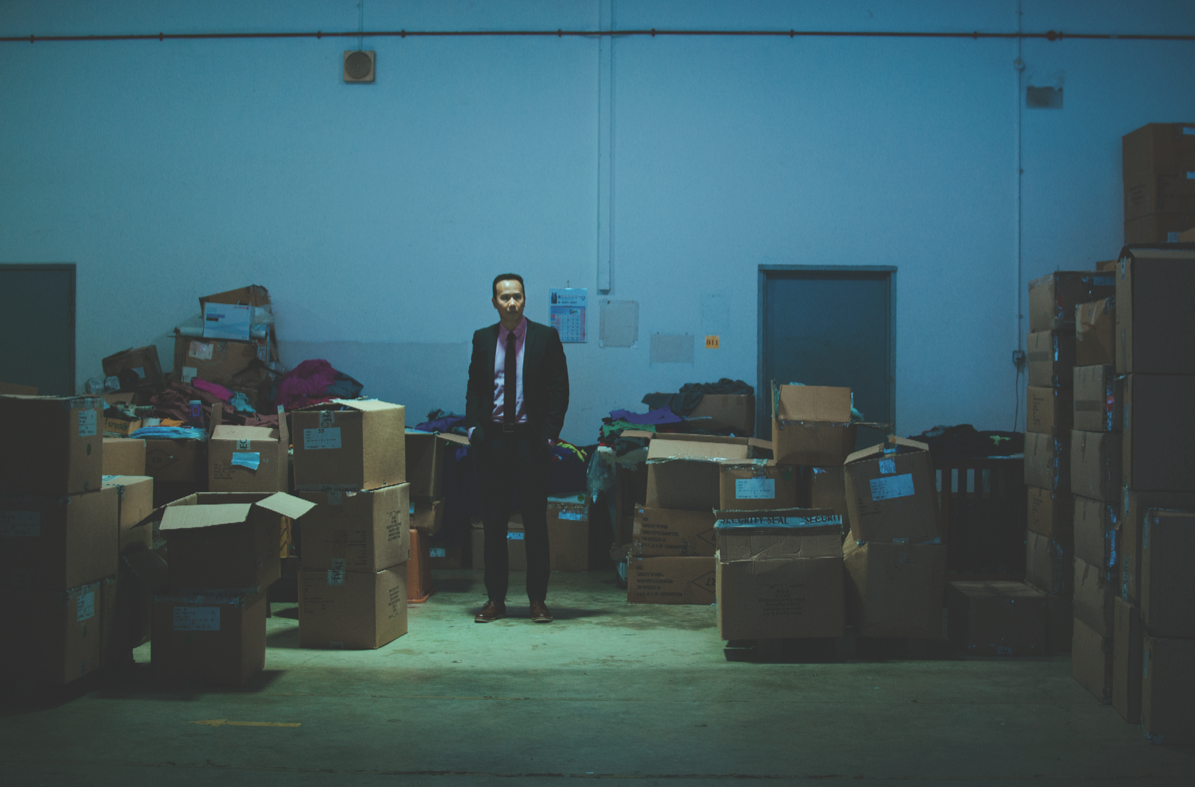
- A FAMILY ENTERPRISE
- VALUES FOUNDATION
- LOOKING AHEAD
- OVERCOMING OBSTACLES
- FORTUNE AND WISDOM
- BACK TO PRIVATE
- SCALE AND MIGHT
- DEFINING FAMILY BUSINESS
A Family Enterprise
Sing Lun Holdings began as a family enterprise established in Malaysia in 1951 by Mark’s grandfather, an indentured laborer from China. “He was sold off as a coolie,” Mark recalls, one of thousands who came to Southeast Asia as bonded laborers who worked, often without pay, until they have settled the debt they incurred to make the journey.
He was sent to a textile shop where he worked for years until WWII broke out and, as final recompense, was handed bolts of fabric by the shop owner who was in a hurry to leave town to avoid getting caught in the ****.
He eventually made his way into Singapore, and with a few friends started a textile trading business, setting up an office in Boat Quay that Mark, like his father before him, would run to this day.
Manufacturing was annexed to the family’s textile trading business when the reins were handed over to Mark’s father, who decided to supply local flourmills with muslin flour bags. Later on he upgraded the manufacturing side by producing cotton underwear, and eventually fashion apparel.
As the company prospered its activities grew beyond trading and manufacture. Today, Sing Lun Holdings has interests in what it calls ‘three pillars’: industrial, real estate, and investment.
Industrial forms a dominant part of the business, with apparel manufacture at its core. It also invests in manufacturing companies outside the sector – in oil and gas, for instance – buttressed by the company’s thorough knowledge of the manufacturing process.
The second pillar is real estate. “We dabble in some residential developments here in Singapore,” Mark explains, “but that is still small. Traditionally, we invest in different niche areas—an interesting example would be the trailer park in the US or the block of apartments in a well-known university that we turned into student housing, but we’ve since divested that asset as well.” Currently, the company holds units of residential and industrial real estate in Singapore, Malaysia, and the US. Funds pooled together with friends are invested in “bigger chunks of properties” in Korea.
The company’s third and final pillar is private equity and traditional investments. Sing Lun Holdings takes a position in companies that it likes that has not gone public. Mark, for example, sits on the board of the skincare company MTM. “We look at how we can contribute to the company. In this instance, the owners have very deep domain knowledge of the (skincare and beauty) industry; on our side, we have very deep domain knowledge of scaling and professionalizing businesses, so there’s mutual benefit that we both bring to the table.”
- A FAMILY ENTERPRISE
- VALUES FOUNDATION
- LOOKING AHEAD
- OVERCOMING OBSTACLES
- FORTUNE AND WISDOM
- BACK TO PRIVATE
- SCALE AND MIGHT
- DEFINING FAMILY BUSINESS
Values Foundation
When he was about eighteen, Mark gave tuition in his spare time. “I taught primary school subjects, and one of the students I tutored was a 14-year-old who getting ready for his PSLE—which was normally for 12-year-olds. I tutored him everyday, but I didn’t charge him more. I could tell he hated it, but I persisted.
“On the day the PSLE results came out I got a call from his Mum. She was crying as she thanked me. Her son passed. She told me that when her son grows up, she wanted him to be exactly like me. I was young then, and it really affected me. That was one of my most satisfying experiences – making a difference in someone’s life.”
Mark claims that even as a boy, he always had a picture in mind of where he wanted to be. That picture changed at different times – a moving goal – but it was always there. He planned on going to the National Junior College for his A Levels, but his academic score wasn’t good enough. “I was adamant, so I went to the school and demanded to see the principal. I told them I wasn’t leaving until I’ve had that meeting.
“The principal came and asked what I wanted. I believe she was surprised and intrigued by my boldness and persistence that she agreed to see me. I explained my situation, and practically began selling myself. She said she would give me a chance, and asked if I played any sports at all. When I told her I played some basketball but wasn’t on the school team, she asked me if I could sing. I sensed I was in trouble, but I persisted.”
Back then the NJC had a very strong in school choir that swept trophies at competitions. The principal called in a lady who took Mark to the music room, sat at the piano, and asked him to do scales. “That was the day I resolved to study hard,” Mark laughs at his recollection. “Singing just couldn’t save me.”
But Mark appreciated the fact that he was given the chance, and that if one were persistent, one could end up somewhere.
“During my day, we served for two and a half years in the army, but we could write in and serve the first two years and three months if we were going to the university, and complete the service after we graduated. I wrote in, deliberately, because I wanted to look around for a job first.
“When I graduated, I returned to camp in Bukit Gombak where I was assigned a clerical position. But I felt I was wasting my time there, so I asked to see the highest-ranking officer. I skipped lunch that day to wait for him, and when he returned, I started selling myself again.”
Mark asked if there was any project he could work so he wouldn’t waste three months filing away documents. The officer liked his approach, and asked if he could do computer animation. “I said yes, although I knew nuts about computer animation. So I took on the project, and immediately went to MPH (bookstore) on Stamford Road to buy a bunch of computer animation books. I had to learn it.” Because his home computer was more powerful than the one in the office, Mark was allowed to work some hours from home. “My Dad would look at me and wonder what kind of national service I was doing.” He persisted, completed the project, and emerged with a fairly good knowledge of computer animation.
“I took that spirit with me. After graduation, I asked myself what I wanted to do. I discussed it with my Dad. Around that time, he was contemplating taking the company public. It was then doing about US$40million turnover, a totally different animal compared to what it is now.”
The company was focused on fashion; its key clients were brands that have since either disappeared or become insignificant, among them Eddie Bauer, which had filed Chapter 11 in the US. Sing Lun Holdings did big business with Disney, and a bit for GAP. It also manufactured for mail order clients, which was big business before online shopping knocked it off the prime spot.
- A FAMILY ENTERPRISE
- VALUES FOUNDATION
- LOOKING AHEAD
- OVERCOMING OBSTACLES
- FORTUNE AND WISDOM
- BACK TO PRIVATE
- SCALE AND MIGHT
- DEFINING FAMILY BUSINESS
Looking Ahead
"If you look at our company, you might wonder whether we are running an apparel or a lifestyle business,” Mark says. “I take the view that we run the latter.”
When he joined company in 1999, when he was 27, he began by asking what mega-trends were coming up in the coming decades. He noticed a couple of key trends: the rise in aging population worldwide, and the keen interest in aging gracefully. “I put them together and asked where to focus my resources. If I polled people about owning an Adidas or Nike T-shirt versus an Abercrombie & Fitch T-shirt, I would find more people in the former category.
“Sportswear is a longer trend. So we invested in machinery, reworked the layout of our plants, and started going after the sportswear market, which has since quadrupled,” Mark says, a fact that partially secures the longevity of his business.
“The trend in fusing sportswear and leisurewear is just beginning to take off as well. For example, we identified yoga early on as one upcoming trend so we decided to work with yoga apparel brands. And now there is performance apparel.” In 2005, they began working with little known brand Under Armour, which is now a USD$250 million company.
“You don’t get to do fashion forecasting in our line; if we did it would become uniform. You may have ideas, but the lead times can be very short – sometimes just thirty days – to get them into production. You are practically designing to market,” Mark explains.
“If you have a thirty days, you can plan for a particular top. You know, for instance, that it is a Capri or a Henley top in specific fabric and colors, but still allow clients to change the prints or add certain elements. That allows you to do really fast moving fashion.”
- A FAMILY ENTERPRISE
- VALUES FOUNDATION
- LOOKING AHEAD
- OVERCOMING OBSTACLES
- FORTUNE AND WISDOM
- BACK TO PRIVATE
- SCALE AND MIGHT
- DEFINING FAMILY BUSINESS
Overcoming Obstacles
On January 1, 2005, the World Trade Organization lifted the quota regime for the textiles sector, and importers were suddenly no longer able to discriminate between exporters. “The industry went through a revolution,” Mark remembers, “one that it has never experienced in the past 40 years. China was just entering into the WTO at that stage. We knew intense competition was coming, but nobody knew what would happen. It was the Y2K of our industry.”
The abolition of quotas changed the way people ran their business. In the past, quotas artificially inflated the prices of apparel. Manufacturers did not charge according to production cost, but on the strength of their quotas. Their abolition, however, meant manufacturers had to be very efficient in their operation in order to survive.
“In the past, clients came to you and asked to do business because of your quota. They needed to buy from you, and you charge what you feel was the right price for the quota. Your price and margins were artificially set up. But without quotas, buyers are free to choose manufacturers to work with from around the world. Our immediate response was to drill down and implement best practices.”
Mark constantly studies the market, following its movements, and predicting where it is headed. “It’s fairly easy to train people to become very good administrators, but there’s real difficulty in training someone to smell the ****, to smell the money – that’s where the entrepreneur in you surfaces.
“We’re blessed in many ways. Most of our reading is correct—not only the brands we choose to work with but also the countries, partners, and team members we picked at different stages of the business. My batting average is quite high,” Mark says.
To his credit, Mark has steered the scaling of the business from $40 million to $250 million company in a short time. “But you don’t do that alone. You build teams, partners, client base, and suppliers. It’s fortunate I’m still young to have managed a stable environment to grow in.
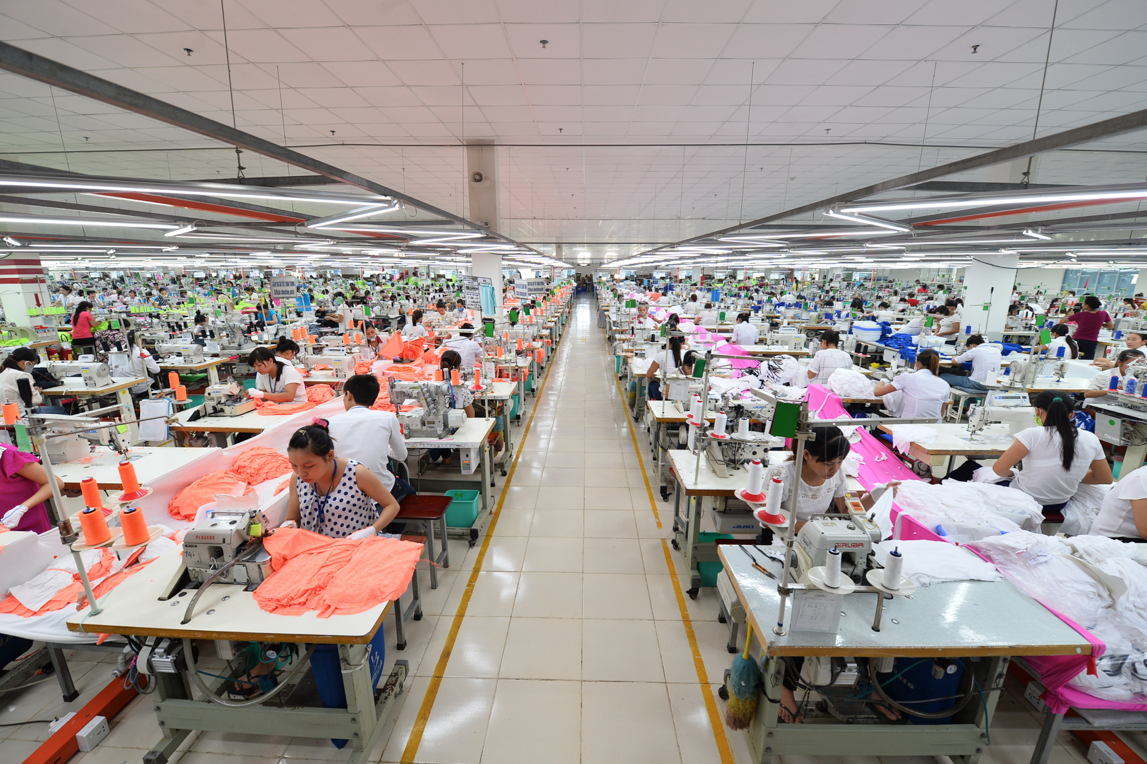
- A FAMILY ENTERPRISE
- VALUES FOUNDATION
- LOOKING AHEAD
- OVERCOMING OBSTACLES
- FORTUNE AND WISDOM
- BACK TO PRIVATE
- SCALE AND MIGHT
- DEFINING FAMILY BUSINESS
Fortune and Wisdom
Mark found an opportune time to consolidate the business through M&As. “I did my first acquisition in 2006. I had four smaller players from Singapore merged into the group, and succeeded with three of them. Buying a company is easy, but integrating and implementing the culture is not.”
Mark feels indebted to his father and family for supporting his decision. “In the past, most traditional businesses were grown organically. I’m grateful that they saw it the way I did.” He followed up the M&As with taking private equity money. The company, listed in the Singapore mainboard, was practically an open account.
Around 2007, when Mark was taking frequent business trips to the US, he noticed the exuberance in its stock market and real estate. “I read a lot and was feeling a bit fearful. I decided it was perhaps time to take some money off the table. My M&As allowed us to grow very quickly, and we attracted the attention of private equity funds.”
“By 2007, I saw the valuations were pretty interesting – at least from my side – so we sold 90 per cent of the shares. We took the company private, and then with the private equity, I continued to run the business, restructuring it further.”
He bought land and moved manufacturing into Vietnam. “But you must understand that I negotiated the deal in 2007; in 2008, we did the transaction, and in October of that year the Lehmann **** happened. We literally took off the money – we were fortunate. We freed up capital to do a lot of things during the financial ****. We bought things cheap, and set the foundation for the next two pillars of the company.”
Mark focused on the business as the recession deepened recession. Their partners had to take a hit. He restructured the business, which would prove to be a smart move, expanding the footprint in Vietnam in 2009 expanded, and entering Cambodia in 2010.
With new partners on board, they were able to make swift decisions; contemplation of risks did not slow them down. They were also fortunate to be in markets that the US and Europe were interested in.
- A FAMILY ENTERPRISE
- VALUES FOUNDATION
- LOOKING AHEAD
- OVERCOMING OBSTACLES
- FORTUNE AND WISDOM
- BACK TO PRIVATE
- SCALE AND MIGHT
- DEFINING FAMILY BUSINESS
Back to Private
The restructured company flourished. It found a profitable niche in sportswear, managed to streamline its cost, found the right team members. By 2015, Mark bought the business back from private equity owners. “I bought it back at good value. After we bought back the business, the profits sort of doubled,” says Mark.
“In different times, you need different ways of managing the business,” Mark declares. “Being public has its advantages. You do get the recognition, which is useful when you’re attracting talents. But the downside is the very short-term focus on quarterly reporting and quarterly profits, because of which the management tend take shorter-term approach to making decisions.”
Although a private company still answers to the board and the investors, it does not have to publish results and take a longer decision timeframe. “That creates a flux in your perceived market valuation; the market measures your performance in a 12-month rolling average, which sometimes is not representative of the future of your earnings. After you make some decisions, you need two or three years to see the results.”
When Sing Lun Holdings decided to go public, it had no debts to pay – it was a very healthy company – but they did it primarily to attract the right talent base. It also allowed them to undertake M&As. Meanwhile, having private equity helps scale the business, although difficult decisions must be made in the short-term.
“It’s interesting how private equity can be good. When your company is too healthy, with too much cash, it tends to relax, especially your finance department,” Mark says with amusement. “What you want to do is to squeeze them a bit, and private equity partners tend to do that. It is useful to have them on board when you streamline operations.”
- A FAMILY ENTERPRISE
- VALUES FOUNDATION
- LOOKING AHEAD
- OVERCOMING OBSTACLES
- FORTUNE AND WISDOM
- BACK TO PRIVATE
- SCALE AND MIGHT
- DEFINING FAMILY BUSINESS
Scale and Might
Sing Lun Holdings recently partnered with a “mega-giant” in Hong Kong, Mark reveals. “The vision is to scale the business to a billion dollars and beyond. With the right partner that dream is realizable for us.”
In the apparel front, there is no immediate plan to do a house label. Growing a brand takes a different form of investment that is long term. Mark prefers to do it step by step. The in-house design team is focused ODM, designing and co-developing garments with the client. There is resistance to offer OEM services as Mark finds it more important for the design team to learn to sniff out the right trends. “If your people only how to manufacture a good product, but don’t know how to develop a good design, you may end up with inventory that does not move.
“We’ve spent the last eight years ensuring the design team is able to do that in terms design and co-development. We need to have the critical mass. At S$300 million that we are at today, I don’t think we’re sizable to do that game. We need to be at a billion-dollar mark to even consider going into that.
At the moment the business is well focused, and Mark feels they need very deep domain knowledge in retail and brand development before it reaches that far. Sing Lun Holdings has made an investment in a Korean fast-fashion company where they contribute knowledge in manufacturing. “We still like the approach of investing in brands or teams with very high skills, or maybe start distributing brands on behalf of the client, where our involvement is on the board level, not in operations.”
- A FAMILY ENTERPRISE
- VALUES FOUNDATION
- LOOKING AHEAD
- OVERCOMING OBSTACLES
- FORTUNE AND WISDOM
- BACK TO PRIVATE
- SCALE AND MIGHT
- DEFINING FAMILY BUSINESS
Defining Family Business
Although Mark is the third generation member of the family that built and controls the business, he runs it based on ROI to shareholders, looking into maximizing returns based on equity invested. He believes that a family business is about running a business with family values and using professional teams. “I don’t think it should be a family-run business that remains the same throughout. It can be a hybrid of family businesses, but what you inject are principles and family values—what we believe in as a family. In our case, it is responsibility, returns, and respect for each other. I’m not fixated that it will be an apparel manufacture for the rest of my life. I believe that model will shift in time to come depending on trends.”
He points at how e-commerce has taken over traditional retail business. “If you look at the US market the biggest retailers aren’t the Macy’s; Amazon has overtaken Macy’s.” As a manufacturer, Sing Lun Holdings allocates 70 per cent of its footprint on manufacturing, and 30 per cent on warehousing. Mark acknowledges that with e-commerce, and the plan to distribute goods in the future, it may have to lower its manufacturing footprint to 40 per cent and allow for a larger warehouse. He also foresees their runs and lead times to be much shorter.
He also foresees more vertical integration for the business to the extent of producing its raw materials from its own textile mills as a long-term strategy. That is where a partnership with a much larger group comes in. Mark reckons that capital expansion required will fall between US$50million and US$100million.
“We have to be much larger than we are today because of the compression of lead times and the fluctuations of the order size. An industry focus is on social compliance, which should be the case because we do not want to be making clothes out of a sweatshop. We control our overtime so that we do not work more than 55 to 60 hours per week in our plants. But what happens if you have a flux of 10 to 20 per cent? Your workers will not be able to sleep in order to absorb that flux. But if you larger facilities, you can spread it out and manage it by adding just an extra hour of work.
“Ultimately, the questions is, do you believe in being 100 per cent of a 10million-dollar company, or in being a 10 per cent of a 100 billion dollar company? I believe in the latter. I believe that in the future, (the business landscape) will be networks against networks of companies, not individual companies against one another. That will be the higher amalgamation of efficiencies.”



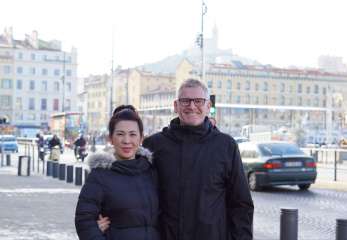
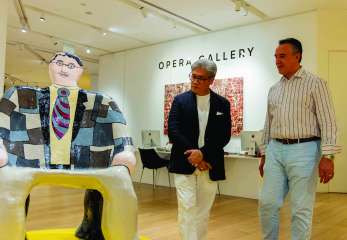
-ADiN.jpg&w=347&h=240&crop-to-fit)




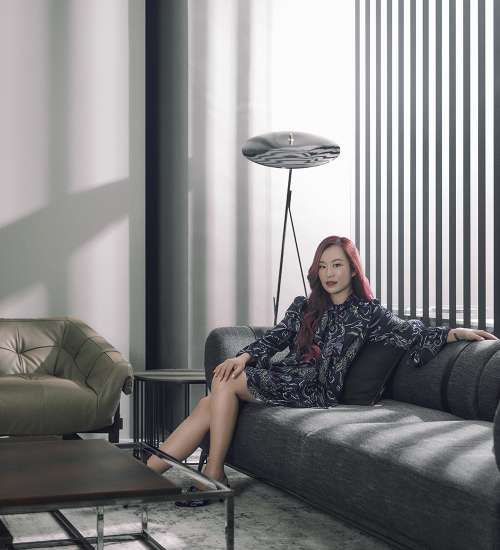
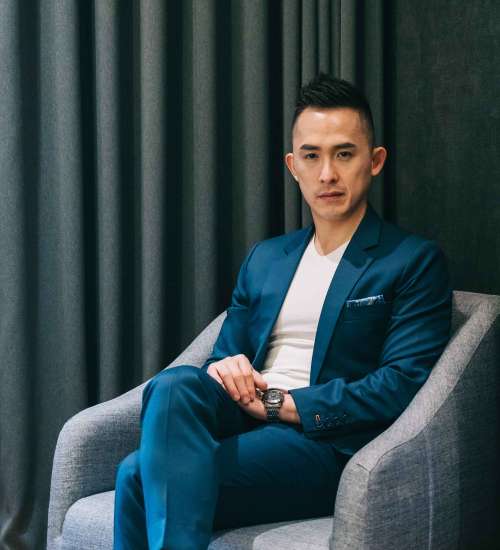
 Back
Back
